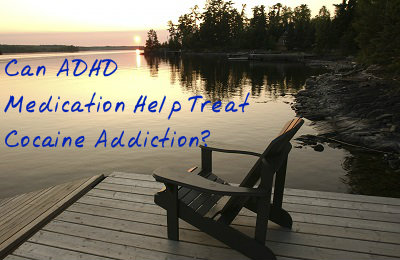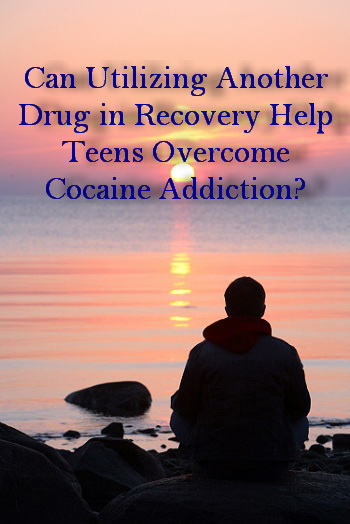A recent study published in the journal Drug and Alcohol Dependence reports that the drug topiramate may help people battling cocaine addiction. More specifically, the study showed that people suffering from both cocaine and alcohol dependence may be more successful in treatment and use less cocaine if they are prescribed topiramate. These findings largely agree with previous, separate studies that also show topiramate’s potential usefulness for treating cocaine and alcohol addictions. However, this most recent study is the first to look at the drug’s effectiveness for people dealing with both dependencies at the same time.
What Is Topiramate?
Topiramate is an anticonvulsant drug that was discovered in 1979. It was approved by the Food and Drug Administration (FDA) in 1996 and has been primarily used to manage seizures in patients with epilepsy. Topiramate has also been frequently prescribed to prevent migraine headaches. In 2012, the FDA also approved topiramate for use as a weight-loss drug in combination with the drug phentermine.
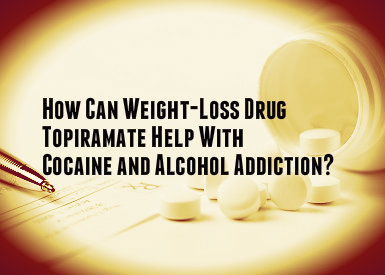 One of the effects of topiramate is an increase in the amount of gamma-Aminobutyric Acid, or GABA, in the brain. This substance is a neuro-inhibitor, and researchers now hope that using topiramate to increase GABA levels may help limit the dopamine release that happens when people take cocaine or drink alcohol. This would reduce the euphoric feelings that result from these substances, and make it easier for people to resist cravings and fight addiction.
One of the effects of topiramate is an increase in the amount of gamma-Aminobutyric Acid, or GABA, in the brain. This substance is a neuro-inhibitor, and researchers now hope that using topiramate to increase GABA levels may help limit the dopamine release that happens when people take cocaine or drink alcohol. This would reduce the euphoric feelings that result from these substances, and make it easier for people to resist cravings and fight addiction.
Details Of The New Study
Researchers in the psychiatry department of the Perelman School of Medicine at the University of Pennsylvania created and published the new topiramate study. These researchers were assisted by the Charles O’Brien Center for Addiction Treatment.
The study took place over 13 weeks, with the participation of 170 people who experienced both cocaine and alcohol dependence. The majority of the participants in the study were African-American males, and participants had an average age of 45.
Some of the patients were treated with topiramate, while others were given a placebo. The study employed a double-blind set-up, in which neither the patients nor the researchers knew who was taking the drug versus the placebo. This allowed researchers to examine the true effectiveness of the drug at reducing cravings, reducing overall consumption of cocaine and alcohol, and helping patients stay in treatment.
Mixed Results
At the conclusion of the study, researchers found both positive and neutral results for the effectiveness of topiramate. Patients who received the drug were more likely to remain in treatment and less likely to use cocaine during the last three weeks of the trial than those who received the placebo. Twenty percent of the participants on topiramate were able go without cocaine during the study, compared to only 7 percent of the participants on the placebo. Patients who had the worst withdrawal symptoms in the past seemed to benefit the most from topiramate.
However, the drug was not better than the placebo at reducing cocaine cravings. In addition, the drug did not help patients reduce their drinking even though they generally reported reduced alcohol cravings.
These results were somewhat surprising, since past studies have shown that topiramate did help people with alcohol dependence. The researchers in the Perelman School of Medicine have speculated that these poor results may reflect the low number of heavy drinkers who participated in the study. In past studies, the average number of days of heavy drinking among the study participants was much higher. It may be that topiramate is more effective for people who are very heavy drinkers.
What Is Next For Topiramate?
Although topiramate studies have been promising, additional research is needed to determine whether the drug can be a useful long-term tool for fighting cocaine and alcohol dependence. Researchers plan to perform more studies in order find out whether topiramate is effective when paired with additional drugs. By combining different drugs that have shown moderate success, researchers hope to produce even more impressive results for a greater percentage of patients.
Ultimately, larger scale studies will be necessary before the FDA can approve topiramate for additional treatment purposes.
Click Here – To Read More About Other Surprising Medications That Help Cocaine Addiction.
Cocaine is an illegal stimulant drug known for its ability to produce physical dependence by triggering long-term alterations in the brain’s normal chemical environment. The common ADHD medication methylphenidate (Ritalin, Methylin, Concerta) bears a strong chemical resemblance to cocaine, but produces less extreme changes in brain chemistry. In a study published in August 2013 in the journal JAMA Psychiatry, a multi-institution research team examined the potential effectiveness of methylphenidate as a treatment for cocaine addiction. The members of this team concluded that the medication apparently reverses some of the critical changes in normal brain function produced by cocaine.
Cocaine Addiction Basics
Cocaine use can lead to physical dependence (i.e., addiction) because the drug sharply boosts the brain’s levels of a specific chemical responsible for producing pleasurable sensations. An individual who experiences this cocaine-related spike in pleasure levels typically heads toward physical dependence when he or she seeks to re-experience the drug’s stimulant “high” again and again over time. In mental health terms, cocaine addiction belongs to a larger illness classification called stimulant use disorder (which in turn belongs to an even larger category of conditions called substance use disorders). This classification includes all forms of addiction stemming from the use of stimulant drugs or medications. It also includes all forms of non-addicted abuse of stimulant drugs and medications. Since issues of abuse and addiction are commonly intertwined, the stimulant use disorder diagnosis replaces all separate diagnoses of stimulant abuse and stimulant addiction.
Methylphenidate Basics
Like cocaine, Ritalin and all other forms of methylphenidate boost the brain’s levels of the chemical responsible for producing pleasure. Methylphenidate has this effect because it has a chemical structure that’s extremely close to the structure of cocaine. However, while cocaine triggers sharp, relatively extreme spikes in the amount of the brain’s pleasure-producing chemical, methylphenidate triggers a smoother, significantly less extreme increase in the amount of this chemical. If it’s taken in a manner not prescribed by a doctor, methylphenidate can easily play a role in abuse/addiction problems, just like cocaine or other stimulants such as amphetamine or methamphetamine. However, when used properly under a doctor’s supervision, it typically presents no unusual abuse or addiction risks.
New Findings
In the study published in JAMA Psychiatry, researchers from Stony Brook University and the National Institute on Alcohol Abuse and Alcoholism assessed the potential usefulness of methylphenidate in easing the effects of cocaine addiction. They decided to use methylphenidate specifically because of its structural resemblance to cocaine and its relatively weak ability to boost levels of the brain’s pleasure-producing chemical. In the same way that doctors can initially treat nicotine addiction with nicotine patches, the researchers wanted to know if it’s possible to initially treat cocaine addiction with methylphenidate. During the study, nine cocaine addicts received a single dose of methylphenidate on two separate occasions. After administering the methylphenidate, the researchers examined the participants’ brains with the help of modern, MRI-based imaging technology.
After reviewing the results of the participants’ brain scans, the researchers found that methylphenidate had two basic effects. First, when compared to a second group of cocaine addicts who did not receive methylphenidate, the addicts who did receive the medication experienced a significant reduction in activity in the part of the brain responsible for boosting pleasure levels. At the same time, these treated addicts also experienced an increase in activity in two other parts of the brain responsible for controlling emotions and regulating behavior. (These two brain areas are typically unusually low-functioning in people with cocaine addictions.) In follow-up interviews, the researchers asked the participants who received methylphenidate a series of questions designed to gauge any real-world changes in their levels of addiction. After completing these interviews, the study’s authors concluded that methylphenidate did indeed weaken the strength of the participants’ addiction-related thoughts and behaviors.
Considerations
The authors of the study in JAMA Psychiatry did not look at the possible effects of long-term methylphenidate treatment on cocaine addiction. However, from their short-term experiments, they concluded that methylphenidate can potentially make brain changes that are critical to disrupting cocaine addiction and giving users of the drug a chance to assert the personal control necessary to successfully take part in long-term cocaine recovery. Despite this potential, the authors note the preliminary nature of their findings and emphasize the need for further research on methylphenidate as a treatment for cocaine addiction or other forms of stimulant addiction. No one should use methylphenidate on his or her own as a cocaine addiction treatment. Such unprescribed and unmonitored use would constitute a form of drug abuse.
The question of how we should deal with people with the brain disease of addiction isn’t an easy one. The criminalized approach, which would have drug users sitting in jail cells across the country and offers little in the way of medical help, has had its time in the sun. Putting people in jail accomplishes very little, with soaring re-arrest rates for drug crimes testament to the fact that merely punitive action is not enough to deal with the nation’s drug problem. This is the key idea behind drug courts — they aim to help drug users solve problems and get into treatment, rather than sending them straight to jail. Graduates of drug courts, like Melissa Swanger and Kathleen C., often become advocates for the approach, a testament to their ability to turn people’s lives around.
Introduction to Drug Courts
Drug courts are specialized courts for those addicted to drugs or alcohol. Rather than send people with recognized illnesses to jail over and over again, drug courts use a multi-pronged approach with the aim of reducing the chances of both relapse and re-arrest. They do this through interactions with a judge, treatment and rehabilitation services, monitoring, supervision, sanctions and incentives, all offered according to the individual’s requirements as determined by an initial risk and needs assessment. There are consequences for failure, however; if the individual continually relapses or commits crimes, the system effectively reverts to the ordinary, incarceration-based approach.
Melissa and Kathleen’s Stories
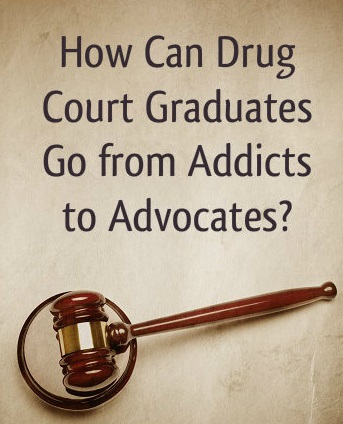 Melissa Swanger had no criminal record until she started using meth. Her goal was to lose weight, but in addition to the 60 to 70 pounds, she lost a lot more, including her home, her car and her children as a result of her addiction. Because there was no indication she was a criminal before she began taking meth, her lawyers pointed her in the direction of the local drug court. Eight years after her entry into drug courts (and seven after her graduation) she is still clean, having made a lasting change in her life, rebuilt relationships and taken responsibility for her actions. She called it “the toughest blessing I’ve ever had,” and went on to comment how the drug court team is “willing to help people instead of saying just throw away the key.” The approach worked wonders for her, and she’s never looked back.
Melissa Swanger had no criminal record until she started using meth. Her goal was to lose weight, but in addition to the 60 to 70 pounds, she lost a lot more, including her home, her car and her children as a result of her addiction. Because there was no indication she was a criminal before she began taking meth, her lawyers pointed her in the direction of the local drug court. Eight years after her entry into drug courts (and seven after her graduation) she is still clean, having made a lasting change in her life, rebuilt relationships and taken responsibility for her actions. She called it “the toughest blessing I’ve ever had,” and went on to comment how the drug court team is “willing to help people instead of saying just throw away the key.” The approach worked wonders for her, and she’s never looked back.
Another story comes from Kathleen C., a mother who found herself committing crimes in order to fund her habit—which graduated from prescription drugs to heroin and meth—so she could use at all hours of the day. She started getting high at work and lost two jobs over the course of her addiction so that eventually she was only working “seasonally” so that employers didn’t catch on to her issues. Eventually, she was arrested for theft and forgery, a moment that became her turning point. After her three-month stretch, she asked to be sent to a drug court. Since then, she’s been clean, graduating in 2012 and managing to repair her relationship with her son. She fought the program at the beginning, but soon realized it was what she needed to overcome her addiction. Since graduating she has gotten engaged and has gained an associate’s degree in applied sciences. She says, “there’s a lot of beautiful things in my life today that I wouldn’t have thought possible.”
Becoming Advocates
After finishing the program, Melissa and Kathleen have become advocates for the drug courts approach. Melissa has become a recovery group leader with a church and tells her own story to inspire others to make a change. The passion the recent graduates show for the program is a testament to its ability to change lives, and the advocates it produces may lead others to make similar decisions to improve their day-to-day existence.
Punishment for Addiction: A Thing of the Past?
The drug court approach seems to be proving that the traditional, punishment-based strategy for dealing with addiction is fundamentally flawed, but not everybody shares the enthusiasm of recent graduates. There are stories of those for whom drug courts did not work, as well as critiques from groups like the Drug Policy Alliance, who argue that drug courts are not cost-effective and leave some people worse off than when they started and that the approach is more punitive than the previous method. This is because they punish users for relapsing, generally with jail time and ejection from the program, with harsher sentences for those who’ve been deemed “failures” in their attempts to get clean. However, whether this is an issue with drug courts as a concept or with how they’re put into practice is unclear.
On the other hand, the National Institute of Justice offers statistics indicating that drug courts are effective at reducing costs to the justice system (an average of $1,400 cheaper per participant) and reducing rates of re-arrest by up to 28 percent over the course of two years. The Drug Policy Alliance alleges that these studies are poorly conducted and often focus on less serious cases, but don’t deny the effectiveness of the approach for some users.
It’s unclear whether drug courts really are as effective as they’re reputed to be, but with the alternative being jail time with no real assistance in getting clean—they must be a step in the right direction. Perhaps a more health-centered approach would be even better, but these types of moves must be made gradually. Maybe, just maybe, the days of punishing people for a health problem are coming to an end.
29 Aug 2013
Drug May Help Teens Overcome Cocaine Addiction
Teens being treated for substance addiction may soon have a new tool to combat their drug problem. A new study finds that outcomes are improved for cocaine addiction treatment when the drug Topamax is included as part of the strategy for recovery.
Treating cocaine addiction can be challenging. Teens that begin using cocaine can become addicted quickly, and when treatment is sought and completed, relapse can be common. Teens often enter into a cycle of recovery and relapse with cocaine addiction.
Addiction to Alcohol
It is common for teens addicted to cocaine to also be addicted to alcohol. Abuse and addiction of both substances can make treatment complicated. For some, the traditional route of cognitive behavioral therapy is not an effective strategy for recovery to be a permanent state.
Topamax, a drug often prescribed for the purposes of treating epilepsy and, in more recent cases, weight loss, has been shown to help those attempting recovery from cocaine and alcohol addiction.
The Study
The research team from the University of Pennsylvania School of Medicine used a double-blind, placebo-controlled design to test the effectiveness of topiramate in treating addiction, particularly in cases where cocaine addiction is complicated with a dependence on alcohol.
Previous studies have proven the effectiveness of topiramate in treating alcohol addiction. Other studies have shown that it can help prevent relapse in those who have received treatment for cocaine addiction. However, this is the first study to explore its application in treatment for a combined addiction to cocaine and alcohol.
The study’s results are critical because those who struggle with cocaine addiction commonly also struggle with alcohol dependence. Targeting the addictions as a unit may be an effective strategy to make recovery more successful.
The study was conducted over a 13-week period that included 170 individuals who met criteria for alcohol and cocaine addiction. The trial produced mixed results.
The Results
The researchers discovered that the drug was effective at reducing the cravings for alcohol, but actual drinking did not decrease. It was not found to impact cocaine cravings.
However, the study participants that were taking topiramate were more likely to remain in treatment and avoid cocaine use during the last three weeks of the trial when compared to participants who were taking a placebo.
The researchers also found that participants taking topiramate were more likely to benefit from the drug if they reported more severe withdrawal symptoms. Those who indicated a high level of restless behavior, agitation and depressed mood were more likely to report benefiting from topiramate.
Counseling and the Drug
First author of the paper, Kyle M. Kampman, M.D., professor of psychiatry and medical director at the Charles O’Brien Center for Addiction Treatment, explains that while counseling is the first choice for addiction, there are some patients who are not responsive to this strategy.
The results of the study indicate that for those who have a particularly treatment-resistant addiction, the addition of a topiramate treatment in addition to cognitive behavioral therapy may result in better outcomes.
The study’s findings add to a growing body of research that supports the use of topiramate to aid in treating addiction. A previous study conducted in 2005 provided evidence that addicts treated with the drug were able to abstain from cocaine use for three weeks or longer.
The researchers note that the failure of topiramate to reduce alcohol use was puzzling, but may be explained by the severity level of that particular group of participants. The effects may be more visible when an individual has a habit of drinking heavily.
The Test Subjects
The study’s findings were the result of a trial conducted among a group of addicts who had an average age of 45 years and which was largely composed of African-American males. The groups of men examined using the drug of treatment and a placebo were similar in terms of sociodemographic variables or drug and alcohol use.
The findings of the study were published in a recent issue of the journal Drug and Alcohol Dependence.
Addiction can be challenging to treat, and some addictions are particularly so. For example, many individuals who enter a substance abuse treatment center for cocaine addiction and complete the treatment program soon return due to relapse. The tools acquired in treatment for dealing with cravings are sometimes not effective in patients who have a particularly challenging case of addiction to cocaine.
 A new study indicates that there may be help for those who have a cocaine addiction that does not respond to traditional treatments. While there has been little success in treating cocaine addiction with medications, the study finds that this strategy may be effective in certain situations.
A new study indicates that there may be help for those who have a cocaine addiction that does not respond to traditional treatments. While there has been little success in treating cocaine addiction with medications, the study finds that this strategy may be effective in certain situations.
Disulfiram is a medication that has been approved for treatment in alcohol addiction for 50 years. Its effectiveness is rooted in the blocking of acetaldehyde metabolism, causing acetaldehyde to build up in the body. The result is an unpleasant mix of nausea, headache and vomiting, accompanied by an increased heart rate. Those who take Disulfiram may quickly learn to avoid drinking alcohol.
Based on previous studies at Yale University that linked a Disulfiram-related reduction in the use of cocaine when paired with alcohol or opiate dependence, researchers recently published new findings in the journal Biological Psychiatry that support the use of Disulfiram in treating cocaine addiction.
The study’s findings show that Disulfiram is able to inhibit dopamine ß-hydroxylase, or DßH, which is an enzyme responsible for the conversion of dopamine to norepinephrine.
Led by Thomas Kosten, the researchers examined Disulfiram’s effectiveness among cocaine and opioid dependent participants who received either the medication or a placebo over a ten-week period.
The researchers also genotyped the DßH gene, which controls the levels of the enzyme to determine which variant of the gene was present in each patient. The researchers wanted to determine whether the variant impacted the success of the Disulfiram as a treatment for cocaine addiction.
The study results showed that Disulfiram was effective in reducing the use of cocaine among the participants according to the DßH gene variant they possessed. The data supported the researchers’ expectation that Disulfiram impacted cocaine consumption by blocking DßH.
The researchers note that there was a significantly greater effectiveness related to Disulfiram use among those participants that carried the genetic variant, and this accounts for perhaps about 60 percent of cocaine addicts. This supports the use of pharmacogenetic matching to establish the best strategy for treatment of cocaine addiction.
The findings are particularly promising, given the challenge that has been connected with treatment for cocaine addiction. While the medication may not effectively treat every individual with cocaine addiction, it may help close the gap for those who carry the necessary genetic variant.
03 Jun 2013
Is the Entertainment Industry to Blame for Drug and Alcohol Problems of Former Child Stars?
If you are like me, you have probably wondered why so many former child television, movie, and music stars have ended up addicted to drugs and alcohol, and just in general are living lives marked by excessive levels of melodrama and notoriety.
From Judy Garland in Hollywood’s Golden Age to contemporary figures such as Michael Jackson, Macaulay Culkin, Britney Spears, and Lindsay Lohan, there are innumerable case histories of individuals who found success on the stage, screen, and in the recording studio at tender ages only to be plagued by bouts with substance abuse and mental and emotional breakdown as they advanced into adulthood. Given how frequent and awful the stories of tragedy have been, it would be difficult not to draw the conclusion that there is something inherently traumatic about great success in the entertainment industry that causes talented young people who make it to the big time to eventually lose their way.
This is indeed an easy conclusion to draw, but that does not make it the correct one. There is no question that what young people who reach stardom at early ages experience is something far removed from normal or routine, and it may very well be that so much public scrutiny and attention so early in life does have an impact on impressionable minds that is not altogether positive. But for the sake of balance and perspective, it must be acknowledged that there have been scores of people who found success in the entertainment business who grow up to be happy, normal, successful and extremely well-adjusted people.
 So for example, while Judy Garland’s experiences with substance abuse have received much attention over the decades, we would be remiss if we did not note that the life of her contemporary, (and the most famous child star the world has ever seen), Shirley Temple, went in an entirely different direction. Temple eventually left the motion picture business and entered the world of international politics, where she helped blaze trails for women everywhere by securing appointments as a U.N. representative and the U.S. ambassador to Ghana and Czechoslovakia. And what is one to make of the career of Ron Howard, who began working steadily as an actor at the age of 6 and went on to become one of the most successful directors in the business and by all accounts a completely sober and level-headed guy? And what about all the formerly young stars who rose to prominence right alongside the notorious guys and gals we have all grown to know so well (Lindsay, Britney, Charlie Sheen, etc.) whose names have never once appeared in the tabloid press because they were busted for a DUI or forced to enter a rehab center?
So for example, while Judy Garland’s experiences with substance abuse have received much attention over the decades, we would be remiss if we did not note that the life of her contemporary, (and the most famous child star the world has ever seen), Shirley Temple, went in an entirely different direction. Temple eventually left the motion picture business and entered the world of international politics, where she helped blaze trails for women everywhere by securing appointments as a U.N. representative and the U.S. ambassador to Ghana and Czechoslovakia. And what is one to make of the career of Ron Howard, who began working steadily as an actor at the age of 6 and went on to become one of the most successful directors in the business and by all accounts a completely sober and level-headed guy? And what about all the formerly young stars who rose to prominence right alongside the notorious guys and gals we have all grown to know so well (Lindsay, Britney, Charlie Sheen, etc.) whose names have never once appeared in the tabloid press because they were busted for a DUI or forced to enter a rehab center?
There are countless examples of former child television, movie, or music stars who have gone on to lead admirable and entirely sane lives. And even among those who have run into trouble, there are many like Drew Barrymore who have been able to bounce back and apparently recover from their substance abuse issues. If we were to take a comprehensive survey, we would most likely discover that these stories of normalcy and triumph outnumber the scandalous tales and stunted life histories of Hollywood’s irredeemable bad boys and girls by a significant margin, but of course people aren’t really interested in hearing about all of the child stars who didn’t end up dead, addicted, or on the skids as adults.
This is not to suggest that there is no problem here. Insiders agree that the drug culture is alive and well in both Hollywood and the music industry and that levels of drug abuse and alcohol consumption are higher among celebrities than among the general public. But just because a certain type of temptation exists does not mean that all who are exposed to it will succumb even if they have been involved with those cultures from an early age, and the fact that so many don’t would tend to suggest that when grown child stars end up addicted and corrupted, there is a lot more going on than meets the eye.
When Parents Don’t Parent, Kids Don’t Grow Up
Rather than blaming the entertainment industry, we need to take a much closer look at the parents of these lost souls, who chose to expose their kids to the public eye during a potentially fragile stage of their lives. Many of the stars who have had the most trouble were actually pushed into the industry by moms and dads who were in it for the money or who wanted to bask in the glory of having famous sons or daughters. Judy Garland, Lindsay Lohan, Gary Coleman, Tatum O’Neal and Michael Jackson are just a few examples of troubled former child stars whose parents seem to have been more interested in fame and fortune than they were in the welfare of their children. In fact, it is quite rare to find former child stars who became addicted to drugs or alcohol later in life who would testify that they came from safe, secure and loving homes. On the other hand, young entertainers who grew up in stable homes with parents who always watched out for their interests and never pushed them to do anything they weren’t ready for are the ones who, for the most part, have seemed to do just fine after reaching maturity.
And that is the key word – maturity. So many of the child stars who have struggled as adults (Michael Jackson is the most obvious example here) never really grew up. Because their lives were so abnormal and distorted, they were never able to make the transition from adolescence to adulthood, and this “failure to launch,” to use a colloquial term, is what left them vulnerable to the dangerous temptations that the entertainment culture offers so readily. Immaturity and insecurity go hand-in-hand, which explains why Hollywood and the music industry attract so many people who lust after fame and fortune because they believe that getting people to pay attention to them and notice them is the one and only thing that can fill up the empty spaces in their souls. And what makes the situation so difficult for many former child stars is that they were taught to think and feel this way from an early age by parents who were projecting their own immaturity onto their helpless offspring.
Lights, Camera, Destruction!
 Behind the glitz, glamour, and money, Hollywood and the music industry share a dark side, and intensive involvement in this world may not be good for the minds, bodies, and spirits of vulnerable people who are in no position emotionally or psychologically to avoid all the potential pitfalls. The former child stars whose moms and dads pushed them toward the bright lights instead of allowing them to find their own passions undoubtedly carry many scars, and the bouts with substance abuse that so many have experienced is a direct reflection of this parental neglect and abandonment (lets call it what it is, kids forced to live out their parents’ dreams were most assuredly neglected and abandoned).
Behind the glitz, glamour, and money, Hollywood and the music industry share a dark side, and intensive involvement in this world may not be good for the minds, bodies, and spirits of vulnerable people who are in no position emotionally or psychologically to avoid all the potential pitfalls. The former child stars whose moms and dads pushed them toward the bright lights instead of allowing them to find their own passions undoubtedly carry many scars, and the bouts with substance abuse that so many have experienced is a direct reflection of this parental neglect and abandonment (lets call it what it is, kids forced to live out their parents’ dreams were most assuredly neglected and abandoned).
Celebrity itself is not to blame for the problem behavior of famous people, but the fact that so many seek fame with such hunger and desperation, as if it were the only thing that mattered, is a sign of deep-seated psychological and emotional immaturity. Child stars all too often are the victims of such misguided ambitions, rooted in the subconscious of their caregivers, and this is why it is hardly surprising that so many eventually fall into the greedy, grasping clutches of drugs and alcohol. Fame and fortune cannot replace parental love and support, and those who attain the former without the latter are almost inevitably headed for disaster—and the cameras will be right there to capture every moment of the action once it finally arrives.
More Hollywood News about Addiction: Colin Farrell: On Overcoming Addiction To Booze And Drugs
Doctors and researchers have long looked for a medication capable of easing the effects of cocaine addiction. For a variety of reasons, their past efforts haven’t been successful, and there is no single medication on the market capable of filling this role. However, current evidence indicates that two other medications-buprenorphine and naltrexone-that were initially designed for other purposes, apparently work in combination to ease cocaine addiction and facilitate successful participation in cocaine rehab programs. Doctors usually use buprenorphine to treat opioid addiction, while naltrexone is used to treat both opioid and alcohol addiction.
Read More
17 Mar 2013
Buprenorphine Treatment for Opioid Addiction
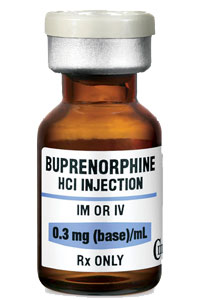 Buprenorphine is a relatively weak opioid medication that doctors sometimes use to treat addictions to stronger legal and illegal opioids such as oxycodone (OxyContin), codeine, and heroin. Like other opioids, buprenorphine achieves its effects in the body by attaching to specialized sites on nerve cells (neurons) throughout the body called opioid receptors. However, it produces much smaller mind-altering effects than commonly abused opioids, and people recovering from addictions to those drugs can use buprenorphine to gradually transition through the withdrawal process, rather than going through severe withdrawal symptoms. In order to reduce any risks for inappropriate use, some forms of buprenorphine come combined with another drug called naloxone.
Buprenorphine is a relatively weak opioid medication that doctors sometimes use to treat addictions to stronger legal and illegal opioids such as oxycodone (OxyContin), codeine, and heroin. Like other opioids, buprenorphine achieves its effects in the body by attaching to specialized sites on nerve cells (neurons) throughout the body called opioid receptors. However, it produces much smaller mind-altering effects than commonly abused opioids, and people recovering from addictions to those drugs can use buprenorphine to gradually transition through the withdrawal process, rather than going through severe withdrawal symptoms. In order to reduce any risks for inappropriate use, some forms of buprenorphine come combined with another drug called naloxone.


